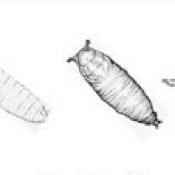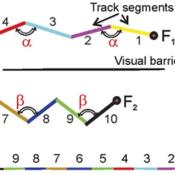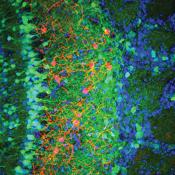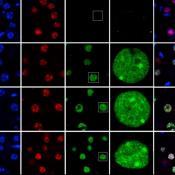Research Breakthroughs
Voltage-gated calcium channels regulate autophagy in neurons
3/22/15A recent study published in PLoS Biology, by a research team led by Drs. Chao Tong and Hugo Bellen has identified a novel mechanism by which neurons regulate autophagy. Autophagy is an evolutionarily conserved and tightly regulated cellular quality control process. It is an essential function that occurs in most cells to remove damaged organelles or misfolded proteins.
Fruit fly research paves the way for biomedical discoveries
1/28/15Baylor College of Medicine faculty and fruit fly biologists at the NRI, Drs. Michael Wangler, Shinya Yamamoto and Hugo J Bellen have published an article this week titled, “Fruit flies in Biomedical Research“, in the journal Genetics that explores the value of fruit fly research in biomedical discoveries and the need for additional funding. This insightful article provides an excellent summary of some of the key contributions resulting from a century of using fruit flies for biomedical research.
Researchers discover how mitochondrial fusion regulates neuromuscular junction synapse development
10/31/14While it is known that defects in mitochondrial transport or dynamics in neurons result in neurological or neurodegenerative diseases, it is not clear what the underlying causative steps are. For instance, while it was known that loss of mitochondrial fusion protein, Mitofusin 2 (Mfn2) causes Charcot Marie Tooth type 2A (CMT2A), a progressive and severe loss of motor neurons, the mechanism by which functional loss of Mfn2 result in neuropathy is not clear. A recent paper from Dr. Hugo Bellen’s lab provides a clue.
Hippocampal place cells create a simple topological template to represent spatial information
10/6/14A pioneering study published this month in eLife by Dr. Yuri Dabaghian and his colleagues at the NRI and the University of California at San Francisco, suggests the existence of a simpler, yet elegant mechanism. They show that place cells ignore all extraneous geometric information and merely convey a “rough and ready” topological map of the environment. In other words, the hippocampal map consists merely of a sequence of spatial locations, analogous to a city's subway map.
A novel neuropeptide signaling integrates adult-born neurons into existing circuitries
9/30/14This week, in Developmental Cell, Dr. Arenkiel and his team report a novel role for a small, soluble neuropeptide, Corticotrophin Release Hormone (CRH) in promoting synapse formation and circuit integration of neurons generated in the adult mouse brain. Traditionally, CRH has been studied as a hypothalamic stress hormone. However, it is now known that CRH is released by various neurons throughout the brain.
Mutation location is the key to prognosis
2/28/13The three most important factors in real estate are location, location, location, and the same might be said for mutations in the gene MECP2, said researchers in a report in the journal Cell. In the study, the researchers relied on data from rare male patients with disruptions in MECP2 that showed that severity of symptoms could be influenced by the location of the gene mutation.
MicroRNA helps unravel the mystery of the Rett protein, MeCP2
2/22/13A snippet of genetic material called microRNA provides new insight into the control of the protein MeCP2, which causes disease when there is too much or too little of it in the brain, said researchers in a report in the journal Genes and Development. In this report, Dr. Zoghbi and her colleagues describe a microRNA known as miR-483-5p that plays an important role in regulating the levels of MeCP2 protein in the fetal brain during development.






